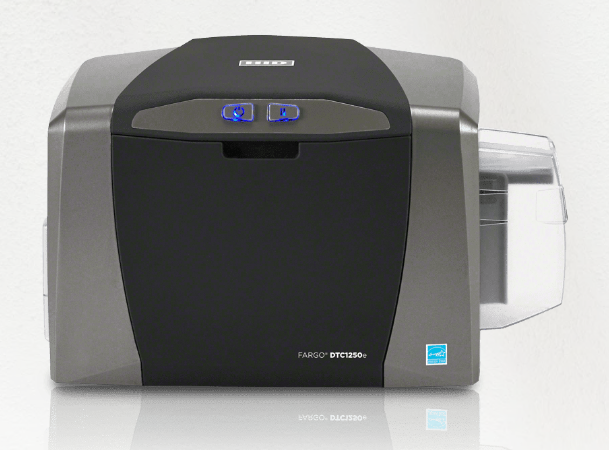How to Trademark a Logo?

After designing a logo for your business and putting in both time and effort to develop a distinct design, the next step is to consider protecting it with a logo trademark.
Companies have considered taking this route because of fear of copyright or trademark infringement or misrepresentation. But, if you have all the budget to start up a company, trademarking a logo would be a smart move from the beginning.
That’s why we created this guide to help you understand the essential information needed on how to trademark a logo.
What is a Trademark?
According to the United States Patent and Trademark Office, “A trademark can be any word, phrase, symbol, design, or combination that identifies your goods or services. It’s how customers recognize you in the marketplace and distinguish you from your competitors.”
Trademark protection applies not just to logos but also to business names, sounds, symbols, and colors that are connected to a specific brand. A trademark keeps intellectual property safe from infringement.
Levels of Trademark Protection
In the United States, there are three levels of trademark protection: local, state, and federal. Let’s delve into these three to better grasp how to trademark a logo the right way.
Local Trademark
The local trademark is the least expensive option among the three. If you choose this option, you may likely win a case over someone who made an infringement in your locality, but the same success won’t be guaranteed in areas outside your local region.
This is usually considered as the common law trademark.
State Trademark
If your business is only conducted in just one state, the state trademark option is the better choice. The secretary of state’s office typically handles the trademark registration south africa and trademark application process.
This is the more affordable option compared to the federal trademark. So, if you only need to operate within one state, this would be good enough for your registered trademark.
Federal Trademark
The federal trademark is the most expensive but potent trademark protection for your logo. This safe keeps your brand on a federal level, and it is processed via the USPTO or the United States Patent and Trademark Office.
With a federal trademark, you have complete legal ownership of your logo throughout the United States. The benefits of having a federal trademark include having the option to file a business lawsuit against anyone who tries to infringe your logo and the capability to collect damages from winning claims.
You will also have the authority to seek help from the U.S. Customs to confiscate items that have your logo without your consent. The federal trademark can also set you up to register your trademark outside of the U.S. and get complete protection.
You also get the ® symbol next to your logo with this trademark level option.
Steps on How to Trademark Your Logo with the USPTO
Now that you have an idea about the essential information needed to understand a trademark and the different types, you will have a better feel of trademarking your logo that would fit your current business needs.
If you need trademark protection on the federal level, the steps are necessary to get a federally trademarked logo from the USPTO.
Step 1: Check the USPTO guidelines to ensure your logo meets the requirements
For your logo to get approved for trademark, it must pass specific qualifications imposed by the United States Patent and Trademark Office (USPTO). One of the main reasons is that it should be truly unique and must not give off any confusing and misleading information.
Step 2: Properly categorize goods or services
After determining that your logo meets all the requirements of the USPTO, you should adequately categorize your product. Upon trademark application, you will have to describe the details of your goods or services.
There are 45 classes, and you should choose the best fit for your goods or services. Failing to categorize properly can lead to denial of the application.
That’s why it’s essential to get advice from a trademark expert that will help you get passed by any confusion and file a trademark legally.
Step 3: Submit a “specimen” presenting the use of the logo.
The USPTO will require a commercial sample that you can present by taking a photograph of the logo placed on the item you are selling. Make sure that the logo is appropriately featured as well.
Step 4: Await the response from the USPTO.
After you have done the steps above, you’re now ready to receive a USPTO confirmation right away. However, the waiting game for their review may take six months to a year.
To check the status of your application, you can verify it via the Trademark Status and Document Retrieval database. The serial number on your receipt should be your reference number.
Step 5: If corrections are required, accomplish them ASAP
If your application is rejected by the USPTO based on a regulatory or administrative issue, you have the chance to revise. You can submit the revised requirements within six months if an Office Action is received.
Step 6: Maintain trademark rights
If there are no issues with your application, you need to pass a Trademark Declaration of Continued Use plus a Trademark Renewal every five years to the USPTO.
Conclusion
Now that you know the steps on how to trademark a logo, you have to ensure that all guidelines are met, includes creating a logo design that is distinct and unique.
You have to eliminate the possibility of being compared to an existing logo. Thus, the creative process should be taken seriously. Don’t even attempt plagiarizing or copying from another company because that would just waste your time when applying at a patent and trademark office.
After having the trademark approved, the next important step is to protect your intellectual property. Large corporations take further steps to vanguard their assets. So, it would be best to take the necessary steps that fit your company’s needs.
Consider how much does it cost and how befitting that would be so you could flex using your logo without worrying about infringement issues in the future.
Trademarking a logo is a process that takes time. If ever you want to take this path, carefully plan this or include this in your business proposal from the get-go.
Whether you choose a local, state, or federal trademark from the USPTO, take the time to create a logo befitting your business’ category and guarantee that it won’t mislead or cause confusion.





